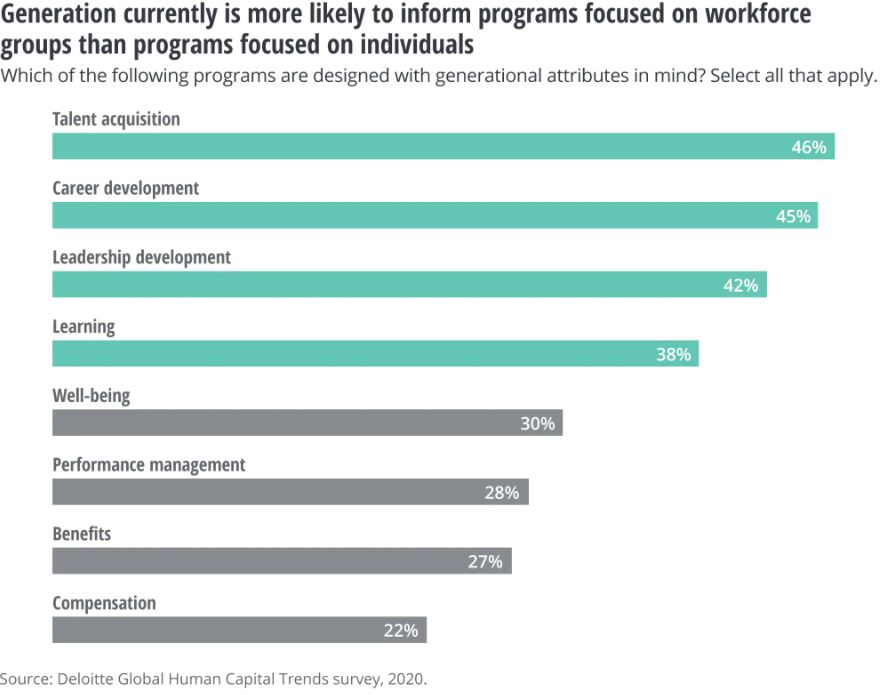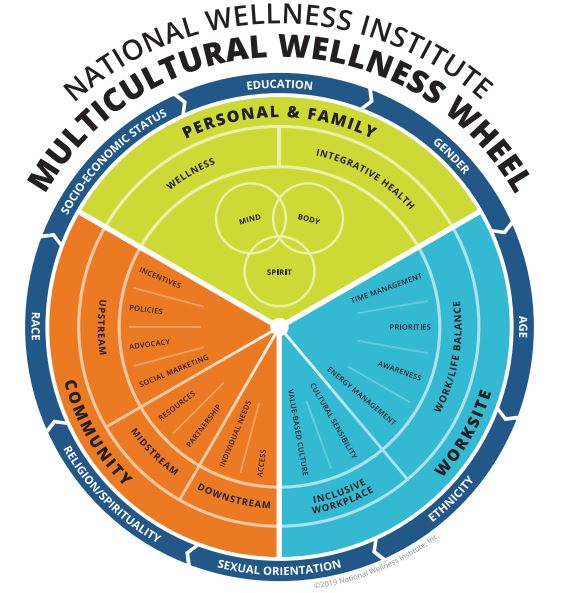In your opinion, who wrote: “Today’s younger generation loves luxury, despises authority and chatters instead of working. They contradict their parents, bully their teachers, and have no respect for age. In this day and age, children are tyrants“?
Well, it’s Socrates, who lived from 470 to 399 before JC! And it is not because certain perceptions transcend the ages without really evolving that we should not consider the differences between generations.
Taking into account everyone characteristics within a group of employees has never been more complex than these days. Organisations must constantly adapt by integrating significant differences of generations, religions, race, gender, sexual orientation, socio-economic status to design strategies and programs to address everyone’s needs and characteristics. This tailored customisation allows employees to maximise their contribution, it gives them more purpose to what they do and why they do it, and, ultimately, allows them to better align with their employer’s purpose, values and long term objectives.
But how can we further tailor health programs that are often already extremely customised? And how do you ensure that these same programs have a real impact on the wellbeing, resilience and performance of your employees?
According to Deloitte’s 2020 Human Capital Trends collection report, age and generational differences are taken into account when designing and implementing most training, learning, talent acquisition, and leadership development programs. However, when it comes to wellbeing, performance or compensation and benefits programs, these customisation factors are used less.

Should we therefore develop health programs more in line with generational differences?
Indeed, there are serious differences between the baby boomers (1946-1960), the Gen X (1961-1980), the Gen Y (1980-1995) and the very new entrants to the labour market namely the Gen Z (1995-2010).
Wellbeing drivers are different depending on the generation
According to the Global Wellness Institute – US-based non for profit organisation whose mission is to empower wellness around the world by educating the public and private sectors about preventive health and wellness – here are the 4 key drivers of wellbeing for the different generations:
| Baby-Boomers and Gen X | Millennials: Gen Y and Gen Z |
| 1. Choice of projects – autonomy in my work
2. Childcare on site or subsidized 3. Nutrition advice 4. Opportunity to progress |
1. My employer cares about my wellbeing
2. I feel that my work has a positive impact on people’s lives 3. My boss cares about my wellbeing 4. My employer supports me |
When we see such expectations and differences, we might think it would be rather effective to design more generation-specific health and wellbeing programs.
However, it seems that the trend is no longer towards over-personalisation to address generational differences, due in part to the emergence of a new group: the “perennials” or the ageless generation. Within your employees you will have perennials, representing a group of all ages, cultures and genders and transcending stereotypes by creating links with each other and with the outside world, beyond differences. These “perennials” are therefore not defined so much by their generation as by their way of thinking.
Focus on core values rather than segmenting by generation
Increasingly, it appears that health and wellbeing programs should NOT be segmented by age or generations. It is better to focus on values, meaning, purpose, and behaviors. As Lindsay Pollak writes in her book The Remix: How to Lead and Succeed in the Multigenerational Workplace: “The fundamentals – meaning, purpose, good leaders, professional development – don’t change. What is changing is the way each generation expresses these needs and the expectations we have for their satisfaction by our employers. ”
Diversity does not only include differences in age, but also in ethnicity, gender, sexual orientation, level of health, socio-economic background, geographic origin, etc.
It is critical to include elements of diversity in wellbeing strategy or to develop diverse and inclusive Wellbeing programs. We can see the trend within certain industries where Health & Wellbeing is managed by the Diversity and Inclusion department. For instance, two of my clients from the tobacco industry have recently integrated Health and Wellbeing into their D&I department.
Another trend: the National Wellness Institute, one of the references in terms of corporate health in the United States, recently redesigned its Wellness Wheel to incorporate everything that characterizes diversity: gender, ethnicity, age, education, socio-economic status, race, religion, origin and belief, sexual orientation.

Beyond legal and regulatory compliance, what should motivate employers is simple: diversity and inclusion are good for wellbeing, and vice versa.
Indeed, a study carried out by the British organisation Do Something Different showed that wellbeing is closely linked to diversity and inclusion behaviors: the more inclusive an individual is, the better their wellbeing.
More specifically, employees with a high level of inclusiveness are about four times more likely to have high level of wellbeing, compared to employees with low inclusiveness. And at the same time, highly inclusive employees are highly unlikely to have a low level of wellbeing. The results of this study confirmed the basic idea that developing diverse and inclusive behaviors can improve different aspects of wellbeing.
So, integrating elements of diversity in a Health and Wellbeing strategy is essential. Organizations must therefore reconsider their H&W programs based solely on age or generation. They must consider the interests, values, diversity, preferences, and opinions of employees to offer them targeted and tailored health and wellbeing initiatives.
This post-generational or ageless approach allows organisations to truly meet the needs and expectations of employees while being beneficial for the organisation, in terms of employees’ wellbeing, engagement and therefore ultimately performance.


